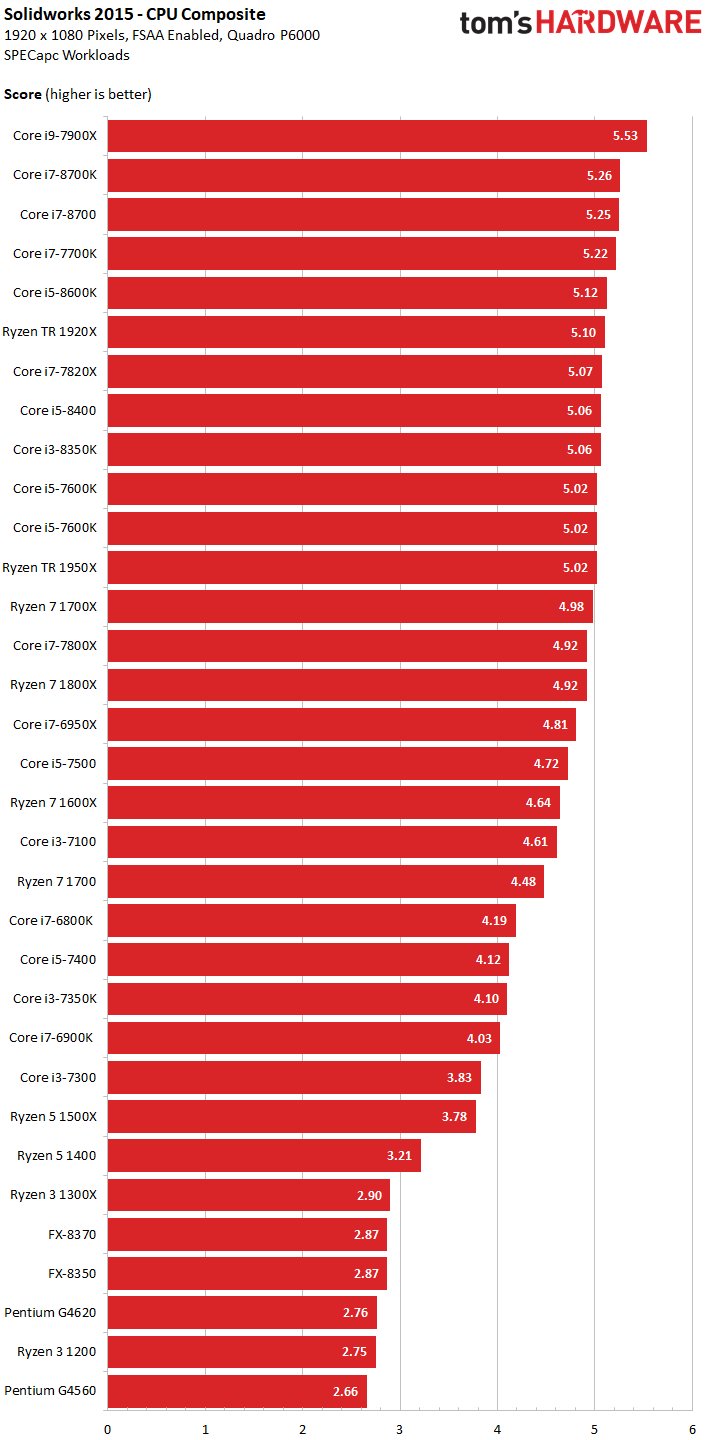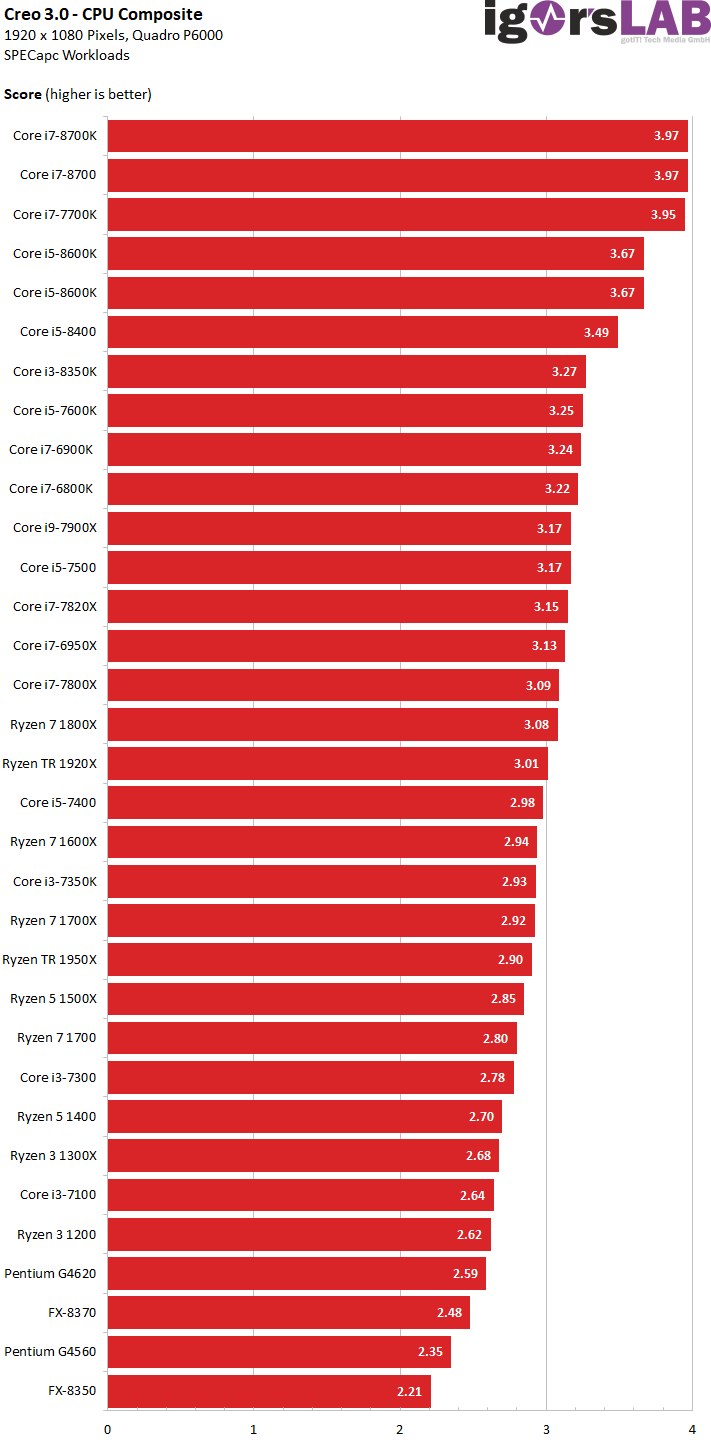

Here and now we deal with the rendering and performance of pure compute tasks. We cover gaming performance, as well as workstation performance in CAD (real-time display), in other parts of this CPU chart... Solidworks 2015, like Creo 3.0, not only uses the CPU to realize the graphics output, but also, in contrast to the free SPECviewperf, also uses computing power to simulate or to create perform calculations and create rendering images. The ideal counter-example is pure rendering tasks such as Blender or Luxrender, with the latter using the console version. At Blender both Ryzen Threadripper - Nomen est Omen win, the rest sorts itself well behind it, where here e... With the CPU Composite, the AMD Ryzen 7 are almost closed in front, the thread rippers are right behind them. More than 12 to 14 threads are barely used, so the Intel Core i7-8700(K) can also shine. Without hyper-threading, d... If you only screw the quality settings high enough in Handbrake, the AMD Ryzen Threadripper sshine almost at will and even the cheaper Ryzen 7 still hold well with...... while the hand turns at 7Zip. Here In... We measure the power consumption for the package or the entire CPU directly behind the voltage converters, the losses of which should of course also be planned. The advantage of our direct measurement or Sensor detection is due to the fact that the value... Games can be very different in power consumption, depending on the actual CPU load. Our example shows a rather average scenario, which is most likely to match the average value of all games in our suite. Certainly a lot of things (again or again the parallelizability of a task and the possible technical implementation and the actual status of the respective software. Especially in rendering, CPUs such as AMD's Ryzen Threadripper can be...
Solidworks 2015, like Creo 3.0, not only uses the CPU to realize the graphics output, but also, in contrast to the free SPECviewperf, also uses computing power to simulate or to create perform calculations and create rendering images. However, the scaling over the cores /threads is not infinite for both programs, so the higher-clocked Intel Core i7-8700K lands just behind the core i9-7900X. The Ryzen Threadripper 1920X is also faster than the nominally larger 1950X, because the clock counts more than the sheer number of possible threads. After all, the Threadripper can still keep the largest Ryzen 7 1800X well behind it.

With Creo 3.0, the influence of clock rates is even higher, although a lot of calculations also have to be done. However, many things are not really perfectly parallelizable over many threads, so that here simply the IPC comes first. However, four real cores should be, even without hyper-threading, six would be another tick better. Anything about it is rather hindering. Tact is everything once again.



































Kommentieren